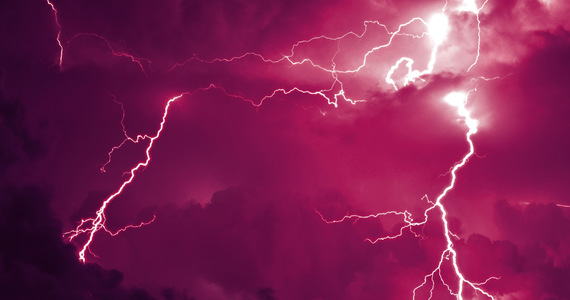Let’s take the solar system as an example, even just the inner part of it. At the center of the solar system is the Sun, a star about 1.4 million kilometers in diameter. 58 million kilometers from Mercury, another 50 million kilometers from Venus, 150 million kilometers from the Sun, and finally Earth. Mars is an additional 70 million kilometers away. It’s hard to imagine these distances, but it’s even harder to imagine that in about 5 billion years, when our Sun becomes a red giant, it will grow so large that all of these planets will be inside this monster star. Instead of 1.4 million km, the Sun’s diameter will be 300 million km.
Read also: We have never seen such a supernova before. What made it so twisted?
It’s the same thing with explosions in space. Even the supernova explosions that occur at the end of a massive star’s life are absurdly bright. Scientists point out that when a supernova explodes, it can outshine all the stars in the galaxy in which it occurs. Moreover, during this short flare, more energy is released than our Sun will emit in its entire lifetime. However, what astronomers have now discovered dwarfs all previous supernovae into insignificance.
According to the authors of the latest scientific article Published in the scientific journal The Astrophysical Journal Letters, a single recently observed star explosion reached the luminosity of hundreds of billions of suns. It is therefore possible that what we were dealing with in this case was an explosion, the first instance of an entirely new class of cosmic explosions.
Interestingly, the ATLAS network of robotic telescopes was used to detect this particular explosion, which scans the entire sky every night for transient events, passing asteroids, or objects whose brightness changes rapidly. The telescopes of this network are located in Hawaii, Chile and South Africa.
The explosion described by scientists is classified as AT2022aedm.
Almost immediately after the explosion was detected by ATLAS, astronomers decided to look at it using the New Technology Telescope in Chile and several other large astronomical telescopes around Earth. It was these additional observations that proved that we were dealing here with something different than before.
Read also: 1800 years ago, astronomers observed a huge explosion. Now the supernova has been captured in great detail
Typically, for an extremely bright supernova, its peak brightness gradually decreases to half its brightness over the course of a month. However, AT2022aedm dimmed much faster. Just one month after the explosion, its brightness was less than 1%. Peak value.
However, this was not the end of the surprises associated with this particular explosion. Scientists were able to determine that the explosion occurred in a huge, ancient red galaxy located about 2 billion light-years away from us.
Normally, red galaxies have long since stopped producing new stars, and only old red stars remain. The problem is that such galaxies should no longer contain stars massive enough to explode as supernovas at the end of their lives.
Data collected using a wide range of observational instruments clearly indicate that we are dealing here with a representative of a completely new class of cosmic explosions. It couldn’t be just another supernova. Some researchers suggest that we may be dealing here with a black hole colliding with a star. Researchers initially called this class of explosions “luminous fast coolers,” or LFCs for short. The name suggests that we are dealing with extremely bright objects that cool and fade incredibly quickly.
Read also: Supernovas are becoming more dangerous. I mean they were always there, we just didn’t know it
After the discovery of AT2022aedm’s explosion, astronomers decided to check whether there were other explosions in the archive data that might have similar characteristics. It turns out that, theoretically, only two explosions recorded in the ROTSE and ZTF surveys in 2009 and 2020, respectively, can be classified into this category of cosmic explosions.
Right now, there are more questions than answers about the origin of the LFC explosion. Discovering more of them, especially in the universe closer to us, will only allow us to check whether we are really dealing with collisions of stars and black holes.

Echo Richards embodies a personality that is a delightful contradiction: a humble musicaholic who never brags about her expansive knowledge of both classic and contemporary tunes. Infuriatingly modest, one would never know from a mere conversation how deeply entrenched she is in the world of music. This passion seamlessly translates into her problem-solving skills, with Echo often drawing inspiration from melodies and rhythms. A voracious reader, she dives deep into literature, using stories to influence her own hardcore writing. Her spirited advocacy for alcohol isn’t about mere indulgence, but about celebrating life’s poignant moments.








